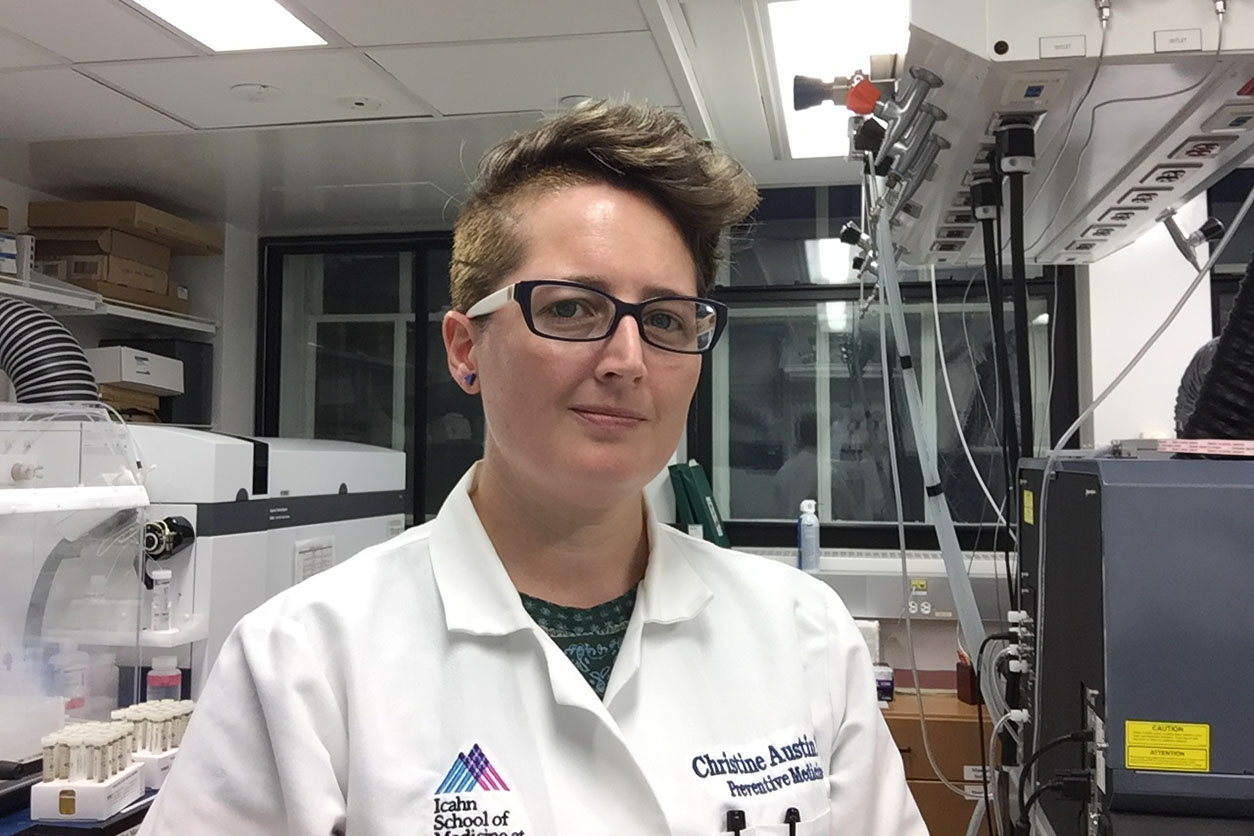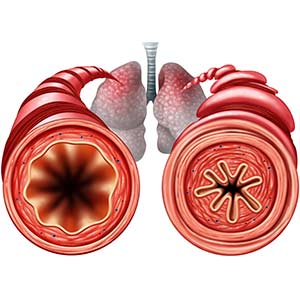Our ancestors relied on breastmilk for infant nutrition for at least the first year of life and then experienced seasonal food shortages, according to new research partially funded by NIEHS. They may have relied on breastmilk to supplement the diet during those periods. The findings, published July 15 in Nature, may have important implications for breastfeeding in modern populations and could help optimize the design of infant formula, according to the authors.
“Studying how breastfeeding practices have evolved helps us understand how this complex source of nutrition has been specifically tailored for human babies,” said co-first author Christine Austin, Ph.D., from the Icahn School of Medicine at Mount Sinai (ISMMS), in a National Institutes of Health news release.
 Austin’s breastfeeding research received a major boost from a 2017 career development grant from the Eunice Kennedy Shriver National Institute of Child Health and Human Development. (Photo courtesy of Christine Austin)
Austin’s breastfeeding research received a major boost from a 2017 career development grant from the Eunice Kennedy Shriver National Institute of Child Health and Human Development. (Photo courtesy of Christine Austin)“Industrialization and agriculture likely changed human breastfeeding practices, and by learning more about what our bodies adapted to, we can better understand how these recent changes are affecting health and development of infants and mothers,” she added. “Knowing more about our ancestors” patterns can help us determine what is the optimum duration and pattern of breastfeeding and could help us better design alternatives such as formula to support mothers and babies.”
Reconstructing breastfeeding biomarkers
 Balshaw’s primary focus is on emerging technologies and innovative approaches to improving exposure and risk assessment. (Photo courtesy of Steve McCaw)
Balshaw’s primary focus is on emerging technologies and innovative approaches to improving exposure and risk assessment. (Photo courtesy of Steve McCaw)Exposures in early life can predict health and development decades later. “Diet is a major environmental factor, and with so many biological systems developing during infancy, diet can have a long-term effect on health,” said David Balshaw, Ph.D., head of the NIEHS Exposure, Response, and Technology Branch and co-director of the NIEHS-funded Children's Health Exposure Analysis Resource (CHEAR; see sidebar).
As a member of the NIEHS core center at ISMMS, Austin studies how breast milk and infant formula affect children’s lifelong health trajectories. She works with co-author and NIEHS grantee Manish Arora, Ph.D., to develop novel analytical techniques. By mapping the locations of biomarkers, or biological indicators, in baby teeth, they can reconstruct environmental exposures during the prenatal and early childhood periods (see sidebar).
But Austin recognized two major gaps in research on breastfeeding in humans.
“First, there was no retrospective biomarker of breastfeeding that could tell us objectively the duration and intensity of breastfeeding, and the milk’s composition,” she explained. “Second, there is lack of understanding of the evolution of maternal breastfeeding and weaning in humans, which leaves us wondering how far and quickly we have veered from our ancestors and what impact that has on our health trajectory now.”
Adaptation to environmental pressure
With support from NIEHS, Austin and Arora developed the technology used in the Nature study. Their goal was to better understand dietary responses of extinct hominins to seasonal fluctuations in food availability.
 Arora is the Edith J. Baerwald Professor and Vice Chairman of the Department of Environmental Medicine and Public Health at the Icahn School of Medicine at Mount Sinai. (Photo courtesy of Manish Arora)
Arora is the Edith J. Baerwald Professor and Vice Chairman of the Department of Environmental Medicine and Public Health at the Icahn School of Medicine at Mount Sinai. (Photo courtesy of Manish Arora)They applied high-resolution, trace-element analysis to two South African Australopithecus africanus specimens more than two million years old. Specifically, the researchers analyzed barium in teeth as a reliable marker of maternal milk intake, in addition to calcium, lithium, and strontium.
A high ratio of barium relative to calcium indicated that A. africanus infants consumed mostly breast milk for the first year after birth, like many humans today. After this first year, the ratios changed in a cyclical pattern for at least four years, indicating variation in diet.
Austin and Arora previously observed a similar recurring elemental pattern in modern wild orangutans up to nine years of age. They interpreted this pattern as seasonal dietary adaptation.
Taken together, the findings suggest that A. africanus may have retained a weaning sequence to overcome seasonal food shortages, similar to modern great apes. According to the authors, this evidence of dietary stress may partially explain why the genus disappeared from the fossil record approximately two million years ago.
Citations:
Joannes-Boyau R, Adams JW, Austin C, Arora M, Moffat I, Herries AIR, Tonge MP, Benazzi S, Evans AR, Kullmer O, Wroe S, Dosseto A, Fiorenza L. 2019. Elemental signatures of Australopithecus africanus teeth reveal seasonal dietary stress. Nature. doi: 10.1038/s41586-019-1370-5.
Wright RO, Teitelbaum S, Thompson C, Balshaw D; CHEAR Network. 2018. The child health exposure analysis resource as a vehicle to measure environment in the environmental influences on child health outcomes program. Curr Opin Pediatr 30(2):285-291.
Smith TM, Austin C, Hinde K, Vogel ER, Arora M. 2017. Cyclical nursing patterns in wild orangutans. Sci Adv. doi: 10.1126/sciadv.1601517.
(Janelle Weaver, Ph.D., is a contract writer for the NIEHS Office of Communications and Public Liaison.)










